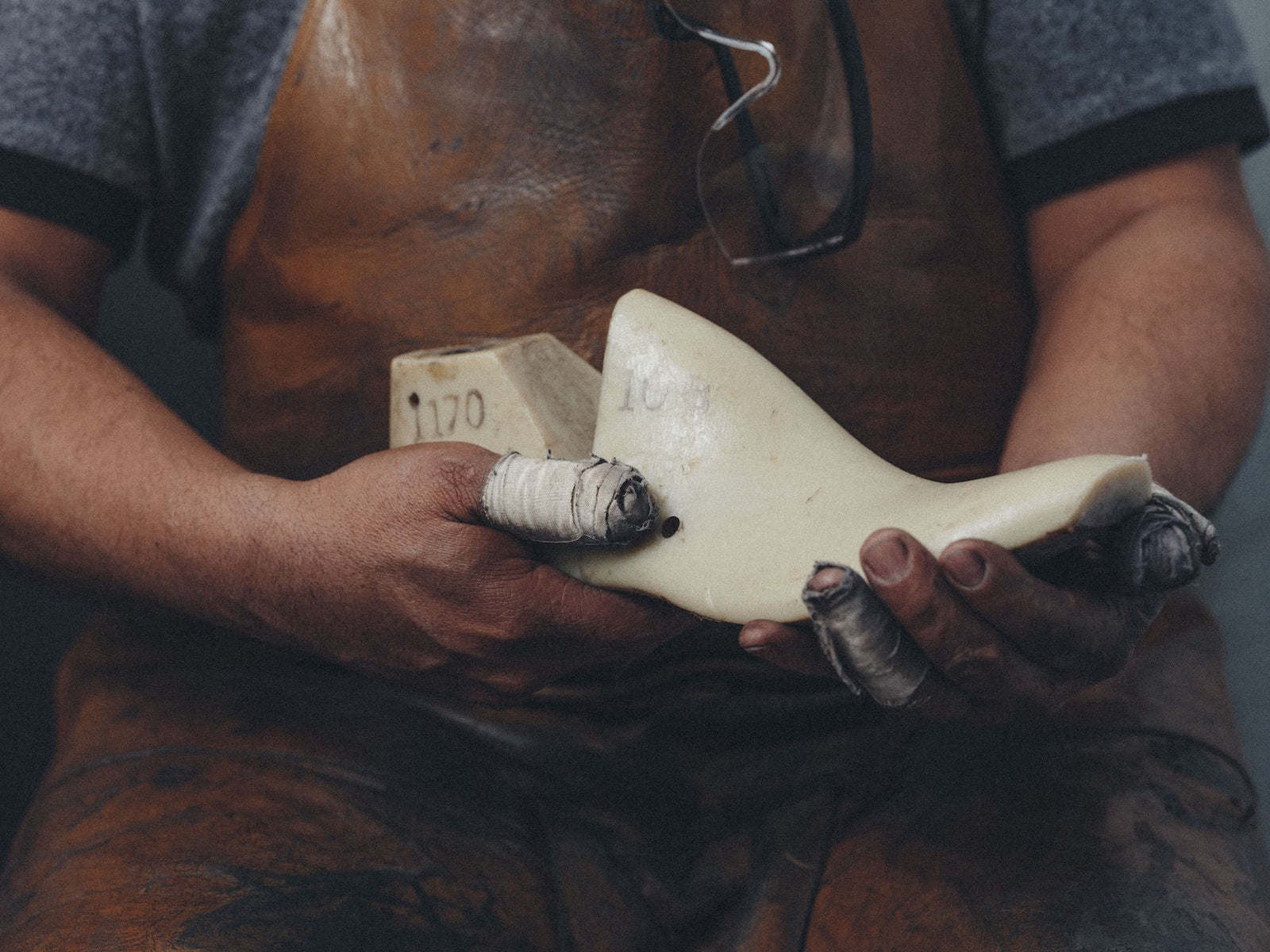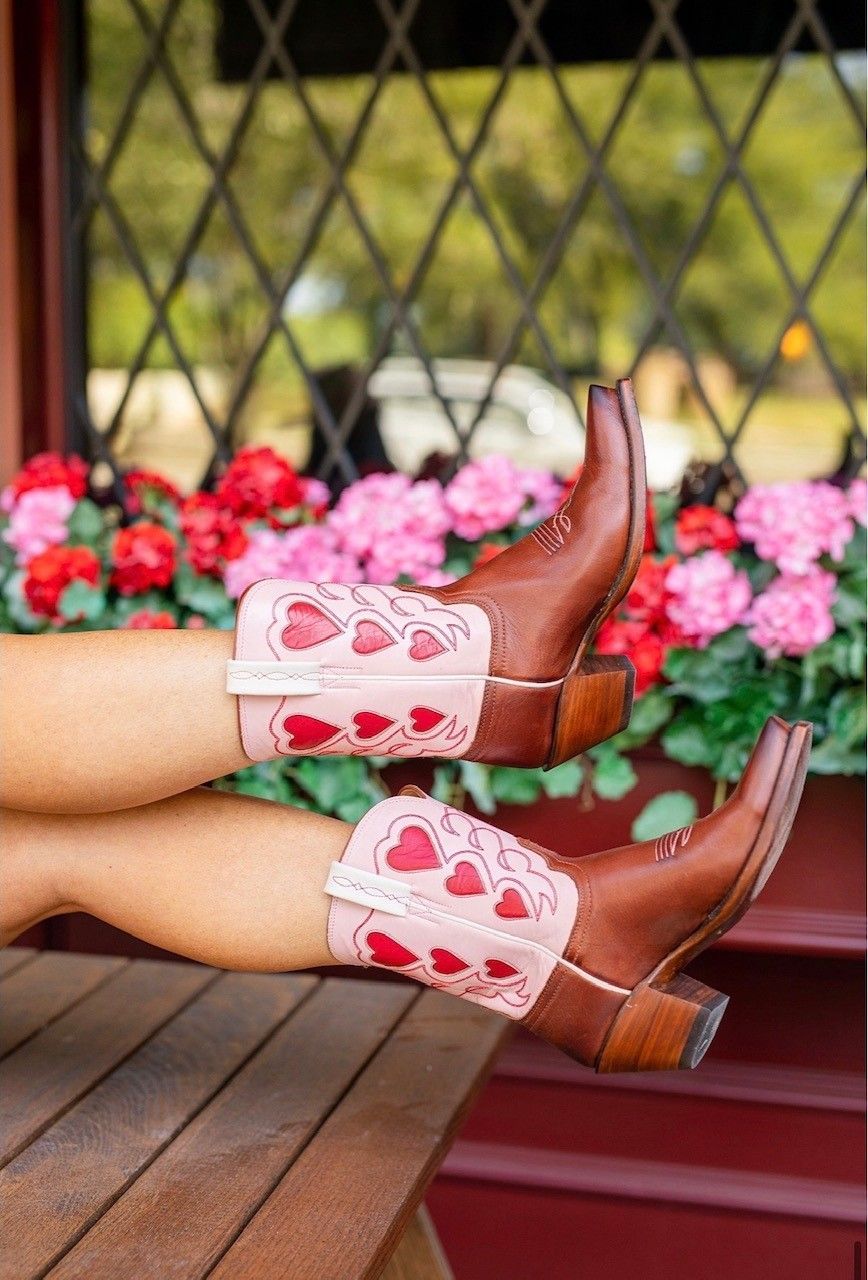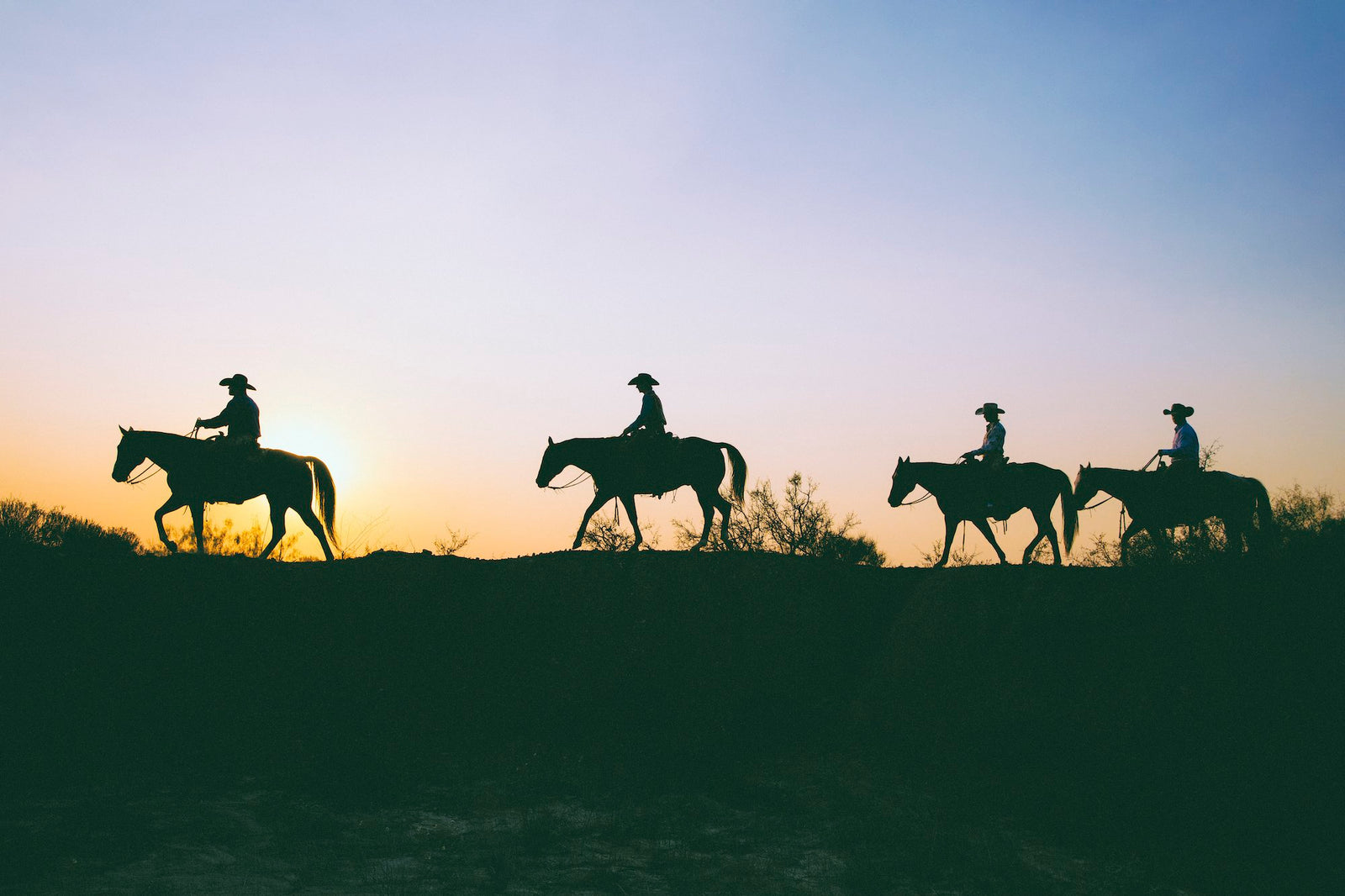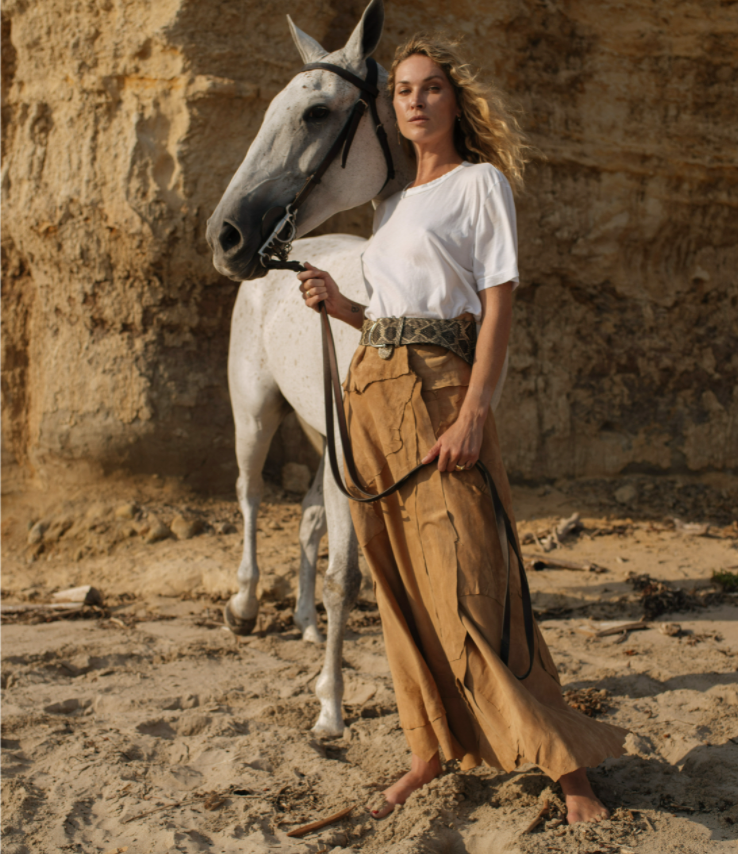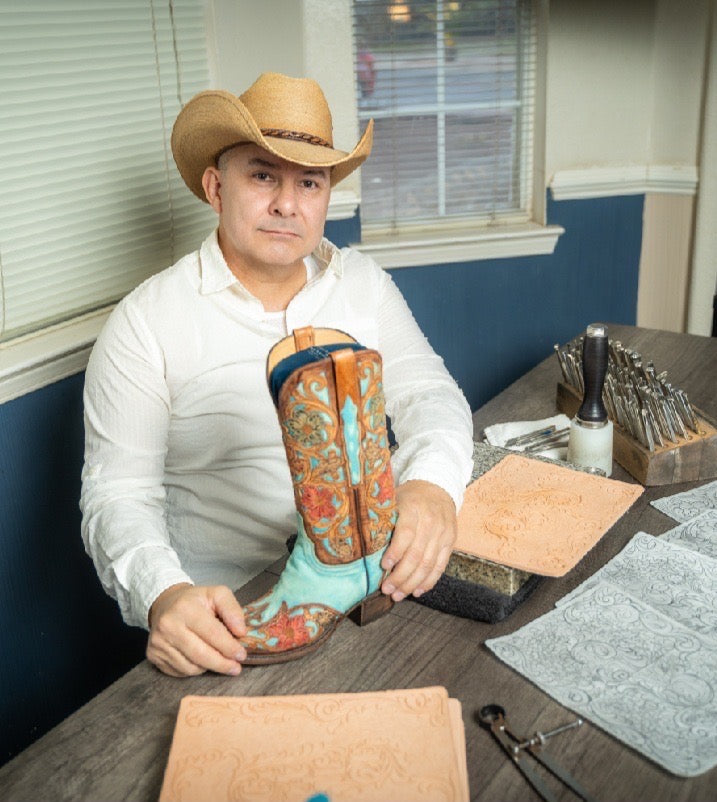
Cowboy boot historians cannot agree on who created the first cowboy boot, much less when the first boot was made. Some argue the Huns first wore them; others say cowboy boots come from Kansas. While the exact origin is unknown, one thing is certain: The modern cowboy boot does not have one distinct origin; this iconic footwear found influence through several cultural waves.
During the mid-1800s, cowboys wore plain yet hardy boots for both comfort and protection while performing difficult labor; some owned dress boots, boots with more refined designs, for special occasions. A heavy influx of European immigrants and a strong military presence made Wellington boots, a taller version of the modern-day roper boot, and Hessian boots, a boot with a scalloped shaped shaft, popular designs. Boots were always made by hand, but the best bootmakers looked for ways to assemble them efficiently. They often resorted to crafting boots with simpler silhouettes, like the Wellington and Hessian boot, making them affordable and practical for rancher workers, soon to be known as "cowboys." Industrialization would later make it easier to produce more cowboy boots in a more efficient manner. Much like other bootmakers at the time, Sam Lucchese's interest focused on developing faster and more efficient tools to help with the growing demand of his Lucchese boot business, often incorporating new machinery at his San Antonio store.
The cowboy lifestyle transformed in the '30s and '40s and no longer focused on exclusively on practicality, but rather on fashion and flair. Hollywood’s influence and the growing popularity of Western films led to the design of colorful cowboy boots and exotic leathers. Actors, such as Gregory Peck and John Wayne, began wearing more fashion-forward Western styles, causing a greater demand for colorful versions.
Bootmakers also began experimenting with exotic leathers and hand-tooling techniques to expand their offerings for customers. According to Tyler Beard, a cowboy boot historian, floral designs and stitch patterns on the shaft and vamp, as well as toe bugs, were becoming increasingly popular for these Hollywood cowboys. Designs weren’t the only thing to change, but toes and heels of the boots were rapidly changing, as well. In The Art of the Boots, Tyler Beard explains that boots from the nineteenth century usually came in a round or square toe with a Cuban heel; however, boot designers began to use different toe and heel styles, adding more variety.
By the 1960s, the cowboy boot went through another transformation. The youth at the time lost interest in the lavish designs worn by their parents and grandparents. They sought simpler designs, much like the original nineteenth-century cowboys. Bootmakers responded with boots featuring lower heels and simple black and brown-toned leather. This quickly changed during the '70s with the popularity of pointed toes. It wasn’t until the '80s, with the release of the film Urban Cowboy, that cowboy aficionados began to request for black and white boots with rounded toes.
Today, the cowboy boot has become a strong part of American and Southern culture. While certain trends come and go, Lucchese boot artisans continue to perfect the craft and use their creativity to create a new era of bootmaking. Be sure to check out our latest styles.


